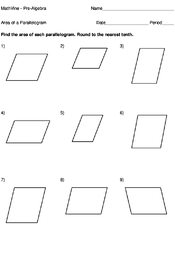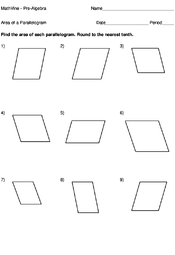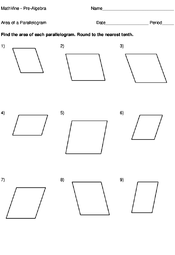Home > Pre-Algebra > Area > Area of a Parallelogram
Area of a Parallelogram
Introduction
A parallelogram is a quadrilateral (four sided object) with two parallel sides. Since the opposite sides are parallel, the length of the opposite sides are equal and the angles on opposite sides are also the same.
Terms
Area - A quantity that expresses the extent of a two-dimensional shape.
Parallel - Parallel lines are lines that always have the same distance between them.
Parallelogram - A four-sided polygon with opposite sides parallel.
Quadrilateral - A four sided figure.
Lesson
Because the opposite sides of a parallelogram are the same length, the area can be found in a similar way to the area of a rectangle:

Area of a Parallelogram Formula
Where b is the length of the base of the parallelogram, and h is the overall height. If the base b is given as 3 and the height h is 2, then


